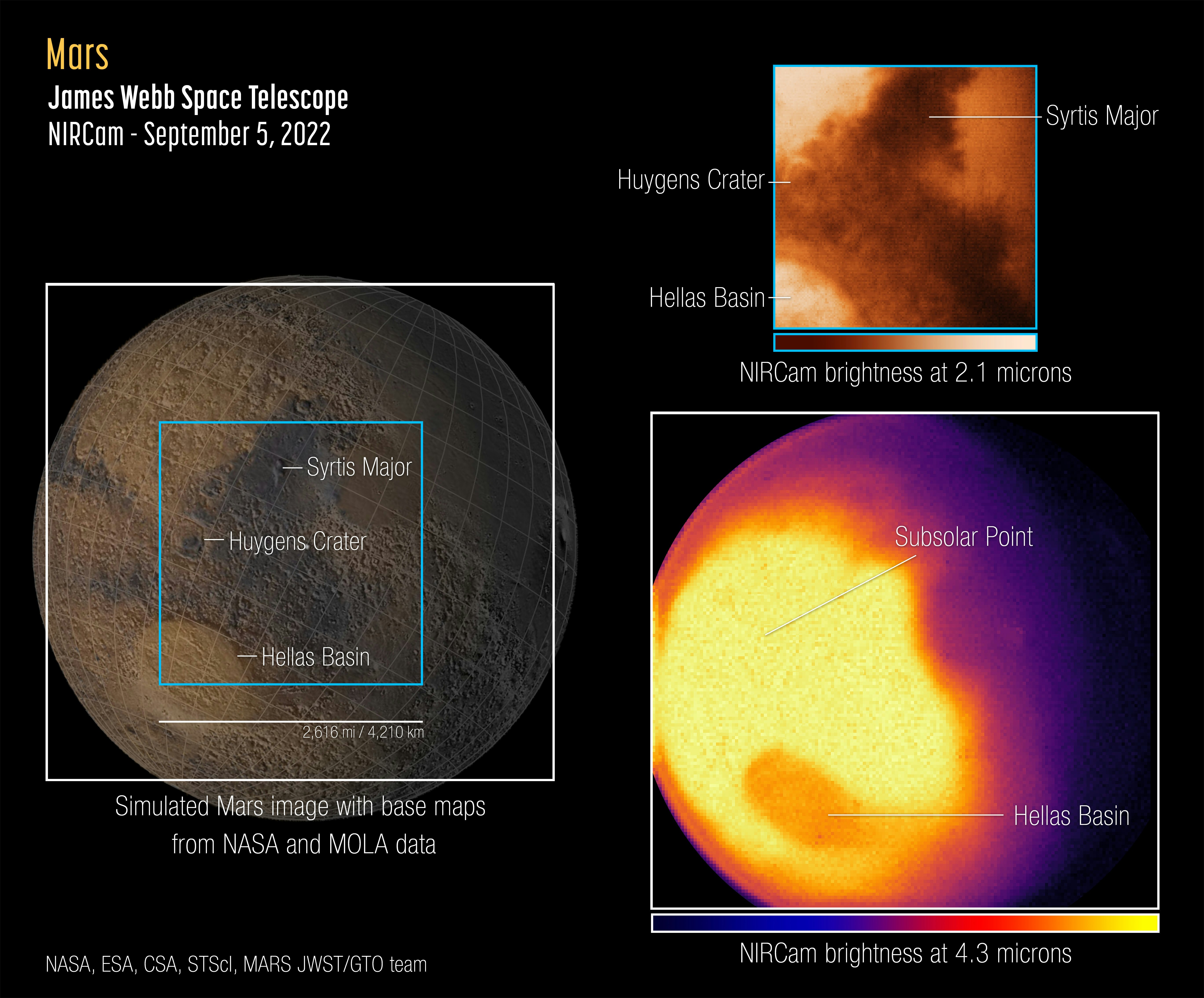
The James Webb Space Telescope’s first images of Mars reveal a swath of the planet’s eastern hemisphere, including one of the Solar System’s largest impact craters and a lava flow from a long-extinct shield volcano. Webb captured the images with its Near InfraRed Camera, or NIRCam, instrument on Sept. 5, along with data from its Near InfraRed Spectrometer (NIRSpec).
What’s new — About 4 billion years ago, something enormous slammed into the young planet Mars, leaving behind a crater 2,300 kilometers (1,400 miles) wide and 7 kilometers (4.4 miles) deep just south of the planet’s equator. The crater, now known as Hellas Basin, shows up in dark orange in Webb’s first image of the eastern half of Mars — a cooler splotch against the brightness of the rest of the daylit side of the planet, which glows bright yellow with radiating heat.

Shorter wavelengths of infrared light reveal more detail; you can see the northeastern edge of the Hellas Basin, along with another of Mars’ largest craters, the 467 kilometer (290 mile) wide Huygens Crater. Water once flowed through Huygens, and it carved a branching network of channels into the rocky surface. NASA’s Mars Reconnaissance Orbiter also spotted clay and carbonate minerals, both of which only form in wet environments, exposed by a smaller impact crater inside Huygens.
To the east of Huygens Crater lies a dark flow of basalt from long-extinct volcano Syrtis Major. The basalt plain is just southwest of the Perseverance Rover’s landing site in Jezero Crater.
Digging into the details — Webb’s NIRSpec instrument also measured the spectrum of infrared light coming from the planet — in other words, NIRSpec sorted Mars’ light into individual wavelengths, which correspond to specific chemicals on the surface and in the atmosphere of Mars. That spectrum of light will help Heidi Hammel (of the Association of Universities for Research in Astronomy, or AURA) and her colleagues search for chemicals that may exist in only small amounts in Mars’ atmosphere, like methane and hydrogen chloride.

Because it’s so close to Earth, it’s tempting to think of Mars as an easier target for astronomers than a distant galaxy from the earliest years of the universe. But for Webb, Mars is so close and so bright that it’s actually hard to look at. All of Webb’s instruments were designed to pick up faint traces of light from the most distant objects in the universe, so the sunlight reflected from a nearby planet can actually overwhelm the telescope’s sensors — a problem astronomers call “detector saturation.”
Detector saturation also shows up in some of Webb’s earlier images, when the centers of bright, nearby stars appear dark and empty. To avoid that same effect in Webb’s first pictures of Mars, the team of astronomers led by Hammel, photographed Mars using very short exposures and developed special data-processing methods.







